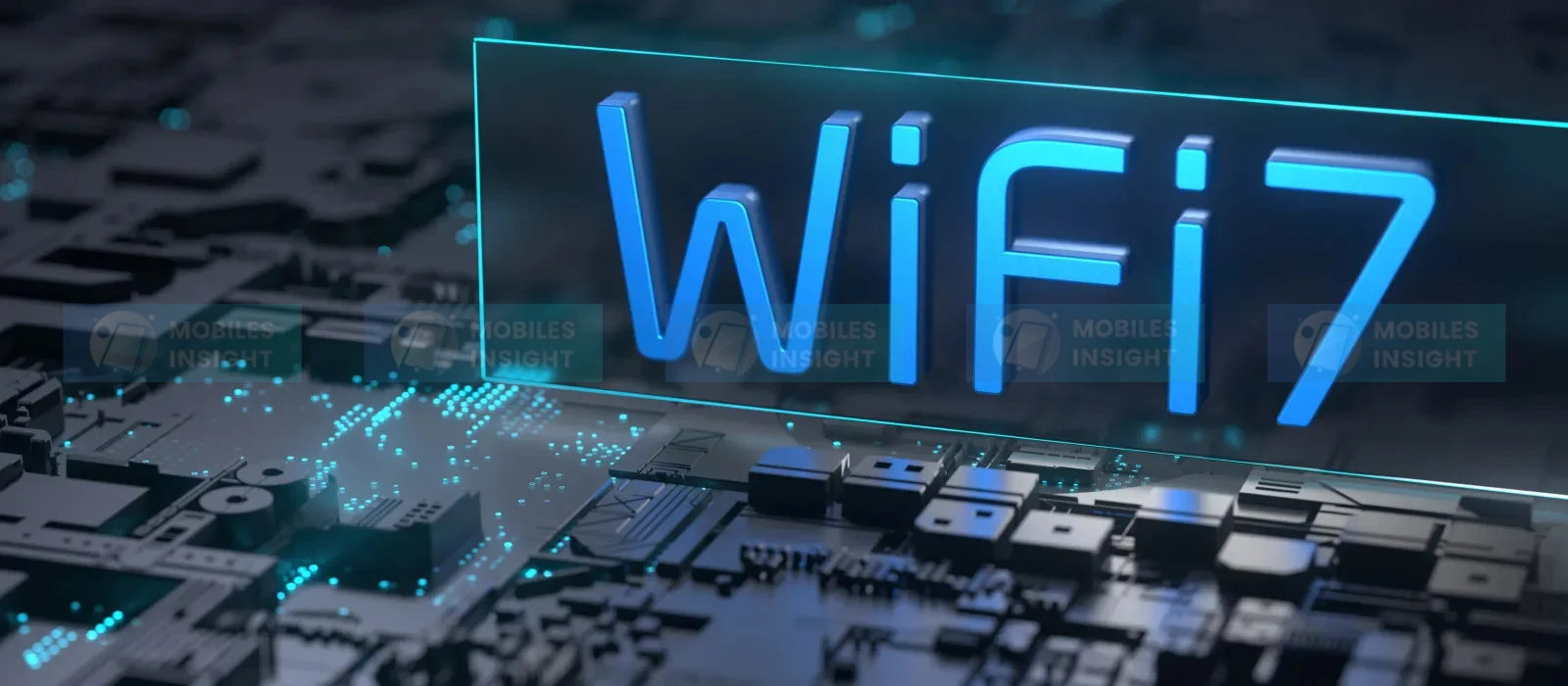
Wi-Fi 7 Technology Promises Lightning-Fast Internet Everywhere
Wi-Fi 7 is the newest wireless technology that gives very fast, low-delay, and reliable internet. It uses wider channels, better signal handling, and improved support for multiple devices at once to keep your connection smooth. Wi-Fi 7 works with devices like the Samsung Galaxy Z Fold 6 and Xiaomi 14 series, supporting smart AI features and satellite connections for uninterrupted online use, including smooth cloud-based Android data backup.
What Is Wi-Fi 7 and How Is It Different?
Wi-Fi 7, officially called IEEE 802.11be, is the next big step in wireless internet. It is much faster and more efficient than Wi-Fi 6 and 6E. This new technology is made to meet the growing needs of modern internet use and works especially well in busy cities like Dhaka.
Key Features of Wi-Fi 7
-
Super Fast Speeds: Wi-Fi 7 can reach speeds up to 46 Gbps, almost twice as fast as Wi-Fi 6E. It uses 320 MHz channels and 4096-QAM technology, which allows more data to be moved at the same time.
-
Multi-Link Operation (MLO): MLO lets devices send and receive data on multiple frequency bands at once, including 2.4 GHz, 5 GHz, and 6 GHz. This means less delay and more reliable connections, perfect for online gaming, virtual reality, and live collaboration.
-
Better Channel Use: Wi-Fi 7 can avoid interference on busy networks using smart features like preamble puncturing. This helps keep internet speeds high even when many people are online.
-
More Device Connections: With support for up to 16 spatial streams, Wi-Fi 7 can connect many devices at the same time without slowing down, making it great for homes and offices with multiple gadgets.
Benefits for Bangladesh Users
-
Smooth Streaming and Gaming: With higher speeds and lower delays, you can enjoy 4K or 8K video streaming and online gaming without interruptions, even in crowded areas.
-
Stable Internet for Businesses: Companies can use cloud services and remote work tools more efficiently because connections are stronger and more reliable.
-
Ready for the Future: As internet needs grow, Wi-Fi 7 ensures you are prepared for new technologies and faster online experiences.
How Will Wi-Fi 7 Handle Multiple Devices Efficiently?
Wi-Fi 7’s Multi-Link Operation (MLO) improves wireless performance by letting devices use multiple frequency bands at the same time, including 2.4 GHz, 5 GHz, and 6 GHz on different channels. Using these bands together reduces delays and increases internet speed, which is great for heavy tasks like 4K or 8K video streaming, cloud gaming, and real-time augmented reality (AR).
Tests have shown that MLO works better than traditional single-link setups. This lowers delays and improves speed, especially in areas with a lot of interference. For example, one study found that devices with MLO had higher internet speeds than those without it, particularly when there was network interference.
MLO also makes networks more reliable. Devices can switch between different links if one slows down or faces interference, helping to maintain a smooth and steady connection even in crowded or difficult network conditions.
Wi-Fi 7 and Low Latency
Wi-Fi 7 brings big improvements in wireless internet, especially by reducing delay, which is very important for real-time activities. With Multi-Link Operation (MLO), Wi-Fi 7 allows devices to send and receive data on several frequency bands at the same time (2.4 GHz, 5 GHz, and 6 GHz). This helps lower delays and makes the connection more reliable. This is very useful for things like augmented reality (AR), virtual reality (VR), and cloud gaming, where fast and smooth performance matters.
Wi-Fi 7 also uses 4K Quadrature Amplitude Modulation (QAM), which allows it to send more data at once. Together with MLO, this makes Wi-Fi 7 perfect for tasks that need very low delay, like real-time analytics and AI-based applications. The faster speeds and lower delays make operations more efficient, which is important for things like predictive maintenance, live data analysis, and self-driving systems.
For developers and tech lovers, Wi-Fi 7 means more interactive and immersive experiences with almost no lag. Whether it’s multiplayer VR gaming, real-time AI tasks, or online virtual classes, Wi-Fi 7 ensures a smoother and more reliable connection.
Integration With Current AI Technology
Wi-Fi 7 is changing the way AI-powered devices work by offering very low delays, high-speed connections, and smooth connectivity, which are important for real-time AI tasks. Its advanced features, like Multi-Link Operation (MLO), 320 MHz channels and 4K QAM, let devices send and receive data on multiple frequency bands at the same time, reducing delays and making connections more reliable.
This technology is very helpful for AI applications at the edge, such as predictive maintenance, real-time data analysis, and autonomous systems. It allows devices to make fast, smart decisions on their own, which supports things like robotic vision, real-time sensor data processing, and environmental monitoring.
Also, AI-powered network management in Wi-Fi 7 keeps the network running smoothly by constantly checking and improving network conditions. This helps fix problems before they affect users and makes the overall experience better. Wi-Fi 7 is becoming essential for future AI applications.
Wi-Fi 7 and Mobile Connectivity
Wi-Fi 7 is changing mobile internet by providing much faster speed, better efficiency, and very low delay. This makes using modern smartphones smoother and more enjoyable.
Top devices like the Samsung Galaxy S25 Ultra, OnePlus 13, and Apple iPhone 17 Air and other series now support Wi-Fi 7. This means data can be transferred faster and apps that use AI in the cloud will work better. It is especially helpful for backing up large files, uploading high-quality photos and videos, and keeping apps synced with AI tools.
Wi-Fi 7 can reach a maximum speed of up to 46 Gbps, which is much faster than older Wi-Fi versions. The 320 MHz channel and Multi-Link Operation allow devices to connect to more than one frequency at the same time. This reduces delay and makes the connection more reliable.
As more devices start using Wi-Fi 7, users in Bangladesh can enjoy faster, smoother, and more reliable internet, especially for activities that need quick data transfer and real-time processing.
Wi-Fi 7 vs 5G Networks
Wi-Fi 7 and 5G networks work together to improve internet connectivity in different situations. While 5G gives fast mobile internet, Wi-Fi 7 provides stable and high-speed internet at home or indoors. In Bangladesh, many rural areas do not have reliable broadband, so Wi-Fi 7 can give smooth, low-latency connections even if 5G signals are weak.
Wi-Fi 7 comes with new features like Multi-Link Operation (MLO), which lets devices use more than one frequency at the same time, and 4096-QAM, which increases data speed by about 20% compared to the previous version. These improvements are useful for things like online classes, AI research, and cloud backups. In rural homes using satellite internet services like Starlink, Wi-Fi 7 ensures a strong and low-delay connection so people can access online resources without interruption.
Security Enhancements in Wi-Fi 7
Wi-Fi 7 brings strong security improvements to keep up with growing cyber threats. The main feature is WPA3 encryption, which protects your data from hacking and uses 256-bit encryption for better privacy. Wi-Fi 7 also supports Multi-Link Operation (MLO), which lets devices send data over multiple frequency bands at the same time. Each connection is encrypted separately, making the network safer and more reliable.
For businesses, Wi-Fi 7 allows safe use of advanced AI platforms with WPA3-Enterprise. This provides 192-bit encryption and strong authentication methods, keeping sensitive information and analytics secure. Moreover, Wi-Fi 7 uses AI-powered systems to detect and stop unusual activity in real-time, helping to protect networks from new cyber threats.
The Role of Satellite Connectivity
Satellite connectivity, like Starlink, is changing how people in Bangladesh access the internet, especially in remote and underserved areas. Starlink officially launched in May 20, 2025, and provides high-speed, low-latency internet with speeds up to 300 Mbps, available across the country. The service costs 4,200 Taka ($35) per month, with a one-time equipment fee of 47,000 Taka.
This fits with Bangladesh’s National Broadband Policy 2024, which focuses on using satellite internet to connect areas that don’t have good coverage. Combined with Wi-Fi 7 technology, which started shipping in 2024 and is expected to make up 7% of IoT Wi-Fi devices, Starlink strengthens the country’s digital infrastructure. Wi-Fi 7’s faster and more efficient connection works well with satellite internet, making cloud work, AI collaboration, and data backup easy, even in remote places.
Together, satellite internet and Wi-Fi 7 are improving Bangladesh’s digital connectivity, giving reliable internet access across the country.
Future Outlook of Wi-Fi 7 in Bangladesh
In Bangladesh, the use of Wi-Fi 7 is growing fast, with Huawei introducing six new Wi-Fi 7 Access Point (AP) models, including the AirEngine 5773 series. These devices are made to improve internet connections in different places, from small institutions to large areas like stadiums and auditoriums. They come with smart antennas that make the signal twice as strong as older versions and also support older devices, so everything works smoothly together.
Telecom companies are also bringing Wi-Fi 7 together with 5G networks to give people better coverage both indoors and outdoors. This step will help build smart cities, support cloud-based AI platforms, and connect with satellite systems, making the country’s digital network stronger.
With Wi-Fi 7, users can also expect smarter internet management powered by AI. The system will be able to predict how much bandwidth each device needs and adjust the network automatically for better performance.
Final Thoughts
Wi-Fi 7 is not just about faster internet speed. It is a powerful technology that will change the way people in Bangladesh connect, work, and use AI. With super-fast speed, very low delay, and the ability to handle many devices at the same time, Wi-Fi 7 works perfectly with mobile phones, cloud-based AI tools, and even satellite internet.
From backing up Android data to using smart AI apps like Google's AI Genie 3 or Perplexity AI, Wi-Fi 7 makes sure your internet is always smooth, reliable, and smart. Whether you are a professional, a gamer, or someone who loves technology, switching to Wi-Fi 7 is an important step to get ready for the future of digital connectivity.
Popular Phone Reviews

Samsung Galaxy A70 Review: Features, Performance, and Value Insights

Apple iPhone 16 Pro Max Review: Features, Performance, and Value Insights

Apple iPhone 12 Pro Max Review: Features, Performance, and Value Insights

Xiaomi Redmi 12 Review: Features, Performance, and Value Insights






